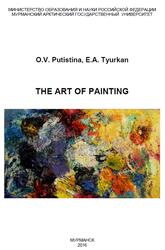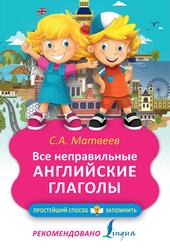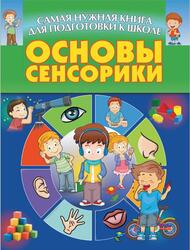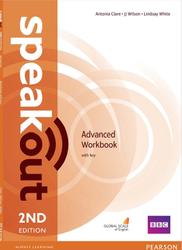Английский язык для аграрных вузов, учебное пособие, Волкова С.А., 2016.
Цель данного пособия — способствовать развитию навыков чтения профессионально-ориентированных текстов из аутентичных источников, навыков говорения, в том числе правильному оформлению монологических и диалогических высказываний, расширить словарный запас за счет изучения профессиональной терминологии, стимулировать развитие навыков письменной речи.
Предлагаемое учебное пособие предназначено студентам, а также магистрантам и аспирантам (направлений «Зоотехния», «Агрономия» и специальности «Ветеринария»), а также всем, кто интересуется изучением английского языка указанной тематики.
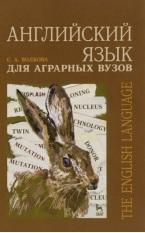
BIOLOGY: THE SCIENCE OF OUR LIVES.
Reading
Task 1.
Read the text and translate it.
Biology literally means the study of life. Biology is such a broad field, covering the minute workings of chemical machines inside our cells, to broad scale concepts of ecosystems and global climate change. Biologists study intimate details of the human brain, the composition of our genes, and even the functioning of our reproductive system. Biologists recently all but completed the deciphering of the human genome, the sequence of deoxyribonucleic acid (DNA) bases that may determine much of our innate capabilities and predispositions to certain forms of behaviour and illnesses. DNA sequences have played major roles in criminal cases (for example, the reversal of death penalties for many wrongfully convicted individuals). We are bombarded with headlines about possible health risks from favourite foods (Chinese, Mexican, hamburgers, etc.) as well as the potential benefits of eating other foods such as cooked tomatoes.
Many people are turning to herbal remedies to ease arthritispain, improve memory, as well as improve moods.
Biology is also a natural science concerned with the study of life and living organisms, including their structure, function, growth, origin, evolution, distribution, and taxonomy. Biology is a vast subject containing many subdivisions, topics, and disciplines. Among the most important topics are five unifying principles that can be said to be the fundamental axioms of modern biology:
— cells are the basic unit of life;
— new species and inherited traits are the product of evolution;
— genes are the basic unit of heredity;
— an organism regulates its internal environment to maintain a stable and constant condition;
— living organisms consume and transform energy. Subdisciplines of biology are recognized on the basis of the
scale at which organisms are studied and the methods used to study them: molecular biology studies the complex interactions of systems of biological molecules; cellular biology examines the basic building block of all life, the cell; physiology examines the physical and chemical functions of the tissues, organs, and organ systems of an organism; and ecology examines how various organisms interact and associate with their environment.
Modern biology is based on several great ideas, or theories:
1) cell theory;
2) evolution theory;
3) homeostasis theory;
4) gene theory.
ОГЛАВЛЕНИЕ.
Preface
PART I. Biology and its basic great theories
Unit 1. Introduction to biology
Lesson 1. Biology: the science of our lives
Lesson 2. Science and the scientific method
Revision
Unit 2. Cell theory
Lesson 3. History of cell theory
Lesson 4. Hooke's microscope
Lesson 5. Development of cell theory
Revision
Unit 3. Evolution theory
Lesson 6. Brief review of evolution
Lesson 7. Development of evolution theory
Lesson 8. Development of modern view of evolution
Lesson 9. Darwinian evolution
Revision
Unit 4. Homeostasis
Lesson 10. Dynamic equilibrium
Lesson 11. Maintenance of internal balances
Revision
Unit 5. Gene theory
Lesson 12. Genetics
Lesson 13. "Nature vs. nurture" question
Lesson 14. Cloning. Reproductive cloning
Lesson 15. Cloning. Therapeutic cloning
Lesson 16. Celebrity sheep Dolly
Lesson 17. Human cloning and its ethics
Revision
PART II. Biographies of famous scientists
Antonie van Leeuwenhoek (1632-1723)
Aristotle (384 BC-322 ВС)
Charles Darwin (1809-1882)
Georges-Louis Leclerc, Comte de Buffon (1707-1788)
Gregor Mendel (1822-1884)
Ian Wilmut (born 1944)
James Hutton (1726-1797)
Jean-Baptiste Lamarck (1744-1829)
Keith Campbell (1954-2012)
Leonardo da Vinci (1452-1519)
Louis Agassiz (1807-1873)
Lucretius (99 BC-55 ВС)
Matthias Jakob Schleiden (1804-1881)
Panayiotis Michael Zavos (born 1944)
Richard Griffith Seed (born 1928)
Robert Hooke (1635-1703)
Rudolf Jaenisch (born 1942)
Rudolf Virchow (1821-1902)
Severino Antinori (born 1945)
Theodor Schwann (1810-1882)
Walter Bradford Cannon (1871-1945)
William Smith (1769-1839)
Part III. Scientific articles for supplementary reading
New technology makes tissues, someday maybe organs
In search of the origin of our brain
Patterns of RNA regulation in nuclei of plants identified Killing for DNA: a predatory device in the cholera bacterium
NASA finds good news on forests and carbon dioxide
Evolution is unpredictable and irreversible
Research solves mystery
How birds learn foreign languages
Appendix
Phrases for making a summary
References
Купить .
Теги: Волкова :: 2016 :: английский язык
Смотрите также учебники, книги и учебные материалы:
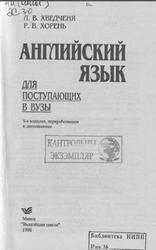 Английский язык для поступающих в вузы, Хведченя Л.В., Хорень Р.В., 1998 — Пособие включает 3 раздела: фонетика, грамматика, лексика. Каждый раздел наряду с необходимым теоретическим материалом содержит большое количество тренировочных упражнений, способствующих … Книги по английскому языку
Английский язык для поступающих в вузы, Хведченя Л.В., Хорень Р.В., 1998 — Пособие включает 3 раздела: фонетика, грамматика, лексика. Каждый раздел наряду с необходимым теоретическим материалом содержит большое количество тренировочных упражнений, способствующих … Книги по английскому языку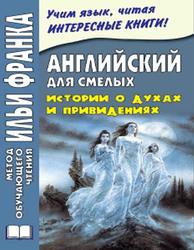 Английский для смелых, Истории о духах и привидениях, Сарапов М. — В книгу вошли популярные мистические новеллы английских и американских авторов XIX - начала XX вв., от знаменитого Дилижанса-призрака Амалии Эдвардс … Книги по английскому языку
Английский для смелых, Истории о духах и привидениях, Сарапов М. — В книгу вошли популярные мистические новеллы английских и американских авторов XIX - начала XX вв., от знаменитого Дилижанса-призрака Амалии Эдвардс … Книги по английскому языку Английский язык, Upgrade your english vocabulary, Пархамович Т.В. — У данного пособия есть все основания для того, чтобы стать вашим незаменимым помощником при изучении, систематизации и повышении уровня знаний … Книги по английскому языку
Английский язык, Upgrade your english vocabulary, Пархамович Т.В. — У данного пособия есть все основания для того, чтобы стать вашим незаменимым помощником при изучении, систематизации и повышении уровня знаний … Книги по английскому языку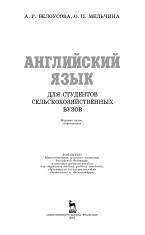 Английский язык для студентов сельскохозяйственных вузов, учебное пособие, Белоусова А.Р., Мельчина О.П., 2016 — Учебное пособие предназначено для студентов, обучающихся по направлениям подготовки (специальностям): Ветеринария , Ветеринарно-санитарная экспертиза , Биология , Зоотехния . Материал … Книги по английскому языку
Английский язык для студентов сельскохозяйственных вузов, учебное пособие, Белоусова А.Р., Мельчина О.П., 2016 — Учебное пособие предназначено для студентов, обучающихся по направлениям подготовки (специальностям): Ветеринария , Ветеринарно-санитарная экспертиза , Биология , Зоотехния . Материал … Книги по английскому языку
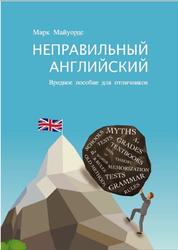 Неправильный английский, Вредное пособие для отличников, Марк Майуордс, 2017 — Язык - это живой организм, а не набор алгоритмов и грамматических структур. Необходимо понимать разницу между изучением языка и его … Книги по английскому языку
Неправильный английский, Вредное пособие для отличников, Марк Майуордс, 2017 — Язык - это живой организм, а не набор алгоритмов и грамматических структур. Необходимо понимать разницу между изучением языка и его … Книги по английскому языку Говорить по-английски за 72 часа, тренинговая система, Сэкономь годы обучения и 500 000 рублей на репетиторах, Дэйв Томас, 2017 — Говорить по-английски за 72 часа (тренинговая система), Сэкономь годы обучения и 500 000 рублей на репетиторах, Дэйв Томас, 2017. Данный … Книги по английскому языку
Говорить по-английски за 72 часа, тренинговая система, Сэкономь годы обучения и 500 000 рублей на репетиторах, Дэйв Томас, 2017 — Говорить по-английски за 72 часа (тренинговая система), Сэкономь годы обучения и 500 000 рублей на репетиторах, Дэйв Томас, 2017. Данный … Книги по английскому языку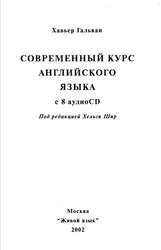 Современный курс английского языка, Гальван Хавьер, 2002 — Полный курс состоит из учебника и 8 аудио CD. С самого начала обучения Вы станете говорить по-английски. Каждый урок открывается … Книги по английскому языку
Современный курс английского языка, Гальван Хавьер, 2002 — Полный курс состоит из учебника и 8 аудио CD. С самого начала обучения Вы станете говорить по-английски. Каждый урок открывается … Книги по английскому языку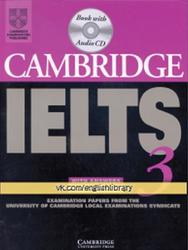 Cambridge IELTS 3, 2002 — This is in four sections, each with 10 questions. The first two sections are concerned with social needs. There is … Книги по английскому языку
Cambridge IELTS 3, 2002 — This is in four sections, each with 10 questions. The first two sections are concerned with social needs. There is … Книги по английскому языку

